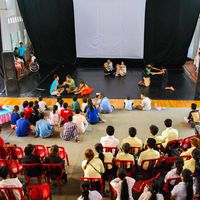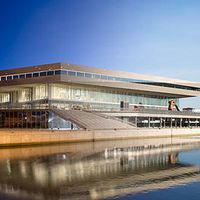A Photographic Look at Southeast Asia’s Remaining Stand-Alone Movie Theaters
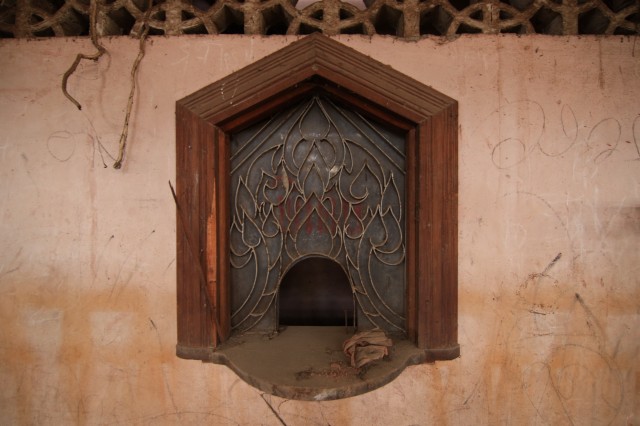 By the mid-twentieth century, the countries of mainland Southeast Asia had all developed a strong affinity for going to the movies. Every sizeable town was home to at least one movie theater, as they grew into central spaces for both entertainment and social life in the communities they served.
By the mid-twentieth century, the countries of mainland Southeast Asia had all developed a strong affinity for going to the movies. Every sizeable town was home to at least one movie theater, as they grew into central spaces for both entertainment and social life in the communities they served.It was common for movie theaters built in mid-twentieth century Southeast Asia to be given the most fashionable, cutting-edge designs, as modern architectures from around the globe were adapted to local tastes and conditions.
[caption id="attachment_6386" align="aligncenter" width="640"]
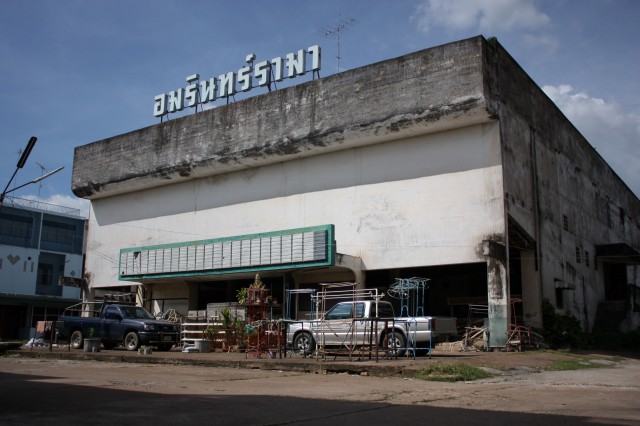 Long abandoned, the Amarin Rama sits vacant in the middle commercial/residential plaza built in the mid-1970’s. The economy of the plaza died with the death of the theater.[/caption]
Long abandoned, the Amarin Rama sits vacant in the middle commercial/residential plaza built in the mid-1970’s. The economy of the plaza died with the death of the theater.[/caption]But these beloved, grandiose movie theaters of decades past had already been forgotten by the time I arrived in Thailand in 2001. For me living in 21st century Chiang Mai, trips to the movies entailed driving my motorbike to one of two shopping malls, both equipped with 7 screen multiplex theaters on their top floors. I took this state of affairs for granted, quietly spurning the consumerist combination, while never bothering to question it.
[caption id="attachment_6379" align="aligncenter" width="640"]
That all changed one afternoon while riding my motorbike en route to the movies. A traffic detour sent me down a street I’d never been, where I accidentally made a discovery of a stand-alone movie theater in a residential neighborhood.
In an instant my perception of the city’s cultural life changed. Was this the predecessor to the mall-bound multiplex that bored me to tears? If so, how many of them were there and why had not I known about them? The theater’s 1960’s architecture and neighborhood scale beckoned further exploration.
[caption id="attachment_6378" align="aligncenter" width="640"]
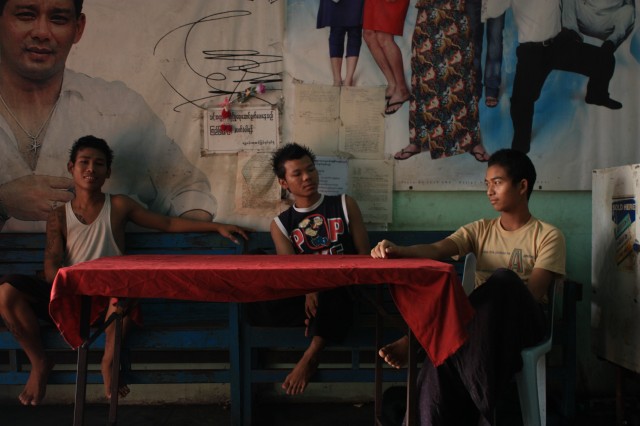 Three young security guards relax between films. The table they sit is used to search the bags of incoming patrons for hidden recording devices.[/caption]
Three young security guards relax between films. The table they sit is used to search the bags of incoming patrons for hidden recording devices.[/caption]Promising myself that I would return for a film in the near future, I drove on towards my original destination, satisfied with my unintended cinema discovery.
But the return visit a few months later proved dismal. A pile of rubble lay strewn where the theater had been. A sign in front of the rubble heap featured a computer generated rendering of a string of townhouses soon to be built in its place.
Motivated by this loss, I began a deeper investigation of the Chiang Mai movie theater scene of the past. Within weeks I learned of the city’s rich movie-going history, with stand-alone theaters once found in nearly every neighborhood. Times had changed, of course, and this particular kind of entertainment had fallen out of favor. But it seemed peculiar to me that nobody seemed to be lamenting the loss of such unique examples of modern architecture, nor the social history that they were a part of.
[caption id="attachment_6375" align="aligncenter" width="640"]
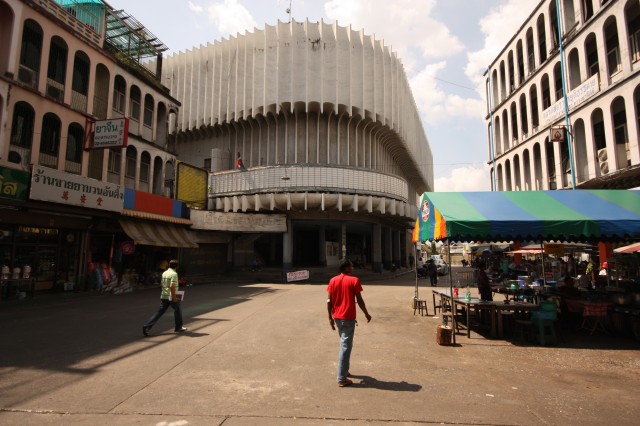 One of the few operational double-feature theaters left in Bangkok.[/caption]
One of the few operational double-feature theaters left in Bangkok.[/caption]From then on I decided that I would dedicate my time and energy to the documentation of this venue type across Thailand before they all disappeared. I began to travel from town to town, eventually covering nearly half of the 77 provinces in search of these twentieth-century artifacts. In almost every town I visited, these great buildings stood abandoned, if they hadn’t already been demolished. Today, only a handful of the nearly one-thousand that once stood across Thailand are still in use.
In early 2009 I started an on-line photo archive, The Southeast Asia Movie Theater Project, to share my cinema findings with anybody interested in seeing them. Since my initial work in Thailand, I have conducted research and photography in neighboring Laos and Burma, and hope for the next phase of the project to cover the theaters of Cambodia and Vietnam.
[caption id="attachment_6374" align="aligncenter" width="640"]
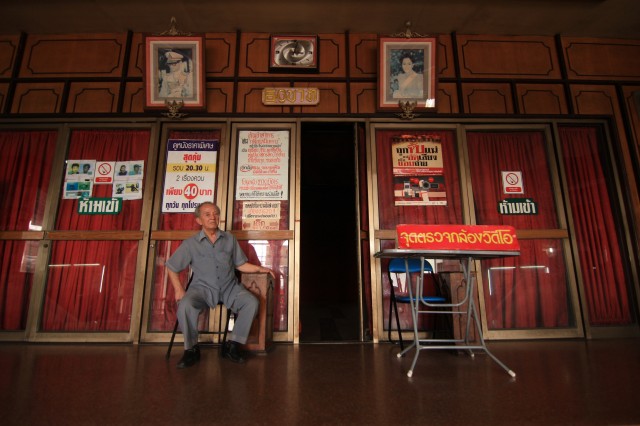 This elderly gentleman has been tearing tickets at the Nakorn Non Rama, in Nonthaburi, Thailand for over 20 years.[/caption]
This elderly gentleman has been tearing tickets at the Nakorn Non Rama, in Nonthaburi, Thailand for over 20 years.[/caption]The culture embodied in Southeast Asia’s stand-alone movie theater represents a slice of twentieth-century life that was once a part of the region-wide push towards modernity. This can be seen in the modern architectures employed in their design: Bauhaus, Art Deco, Brutalist and more, each blended with local traditions and tastes.
The mix of architectural styles in any given city, created by serial demolition and rebuilding, is a testament to the necessity of creative destruction to keep a city vibrant. But in our haste to relieve ourselves of outmoded buildings, we often overlook the permanence of such decisions and the fact that the buildings, particularly those of social or architectural significance, can represent a city’s future competitive advantage.
While many of Southeast Asia’s cities are today in the midst of sweeping socioeconomic change, the redevelopment imperative will lead to fresh demolitions. As the quantity of old movie theaters dwindle, however, the law of scarcity states that those remaining should increase in value correspondingly; products of a twentieth-century modernity movement which is now part of the greater historical milieu. Through documentation, I hope to ensure that if none are preserved, that they are not altogether forgotten.
About the author
Philip Jablon currently resides in Chiang Mai. The entire archive of the Southeast Asia Movie Theater Project can be seen on-line at www.seatheater.blogspot.com.



